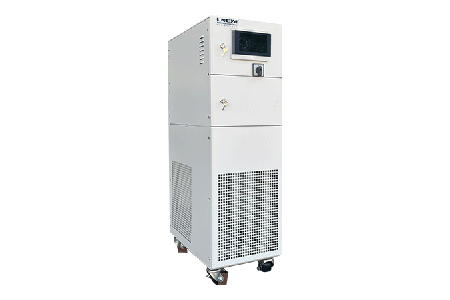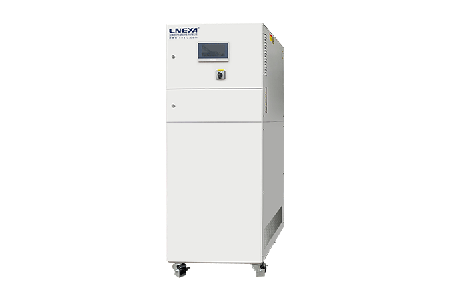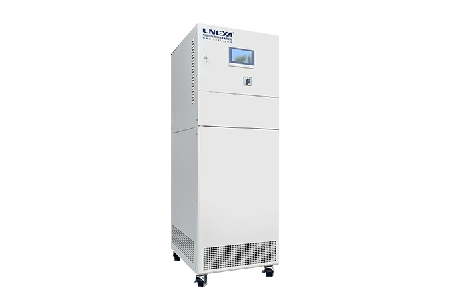В чем разница между чиллером и градирней?
If you had to sum up the difference between a chiller and a cooling tower in one sentence, it would be this: a chiller is a refrigeration device, while a cooling tower is a heat dissipation device.
Chiller VS Cooling Tower: What Kind Of Connection Is There Between Them
In contemporary industrial environments, maintaining precise temperature control and effective heat dissipation is essential for optimal equipment performance. Both industrial chillers and cooling towers play key roles in meeting cooling demands, but they serve different functions and are used in different ways. This blog post compares industrial chillers and cooling towers from several angles to help you better understand their features and applications.
Working Principles
The Refrigeration Principles Of Chillers
A chiller’s refrigeration cycle involves four key stages: compression, condensation, expansion, and evaporation. Key components such as the compressor, evaporator, condenser, and expansion valve work together to remove heat from the water, which is then recirculated to cool machinery or production processes.
The Heat Dissipation Principles Of Cooling Towers
A water pump sends high-temperature water into the cooling tower. At the top of the tower, the hot water is sprayed through nozzles, breaking it into small droplets or forming a thin film. Inside the cooling tower, this hot water comes into contact with air, which rises from the bottom of the tower and flows upward, creating a convection effect.
As the water droplets interact with the cooler rising air, evaporation begins. Evaporation is an endothermic process, meaning it absorbs heat from the surroundings. As water evaporates, it carries away heat from the remaining water, causing the overall temperature of the water to decrease.
The cooled water collects at the base of the cooling tower, forming a cold water basin. From there, it is pumped back into the system, completing the cooling cycle.

Точность контроля температуры
Chillers offer precise temperature control, which is crucial for high-end manufacturing industries where even slight temperature fluctuations can affect product quality. For example, LNEYA semiconductor chillers can achieve a temperature control accuracy of ±0.1°C.
By contrast, cooling towers are more affected by environmental factors. During hot or humid weather, their cooling efficiency may decrease because the drop in water temperature becomes less predictable. While cooling towers are effective at dissipating heat, they cannot match the temperature consistency provided by industrial chillers.
Применения
Chillers are well-suited for settings that demand precise temperature control, including electronics manufacturing, chemical processing, injection molding, and pharmaceutical production. They maintain consistently low water temperatures to prevent equipment from overheating, which could lead to production downtime or quality issues. For example, injection molding machines require stable cooling water to ensure proper plastic formation, while electronics manufacturing demands strict temperature regulation to protect sensitive components.
Cooling towers, on the other hand, are commonly used in large-scale cooling systems such as HVAC systems, power plants, and industrial cooling loops. Their main purpose is to extract heat from large quantities of water. While they cannot match the precise temperature control of a chiller, cooling towers excel in high heat load environments, offering efficient cooling for systems that do not require tight temperature regulation.
Structure And Maintenance
Chillers have a more complex structure, consisting of components like the compressor, evaporator, and condenser. Due to their refrigeration cycle and mechanical components, chillers need routine maintenance. This includes tasks such as replacing circulating water, cleaning dust filters, and checking for refrigerant leaks to ensure long-term reliable performance.
Cooling towers, by contrast, have a simpler design, typically made up of a water basin, fill media, spray nozzles, and fans. Maintenance tasks mainly involve cleaning the water basin, inspecting the fan, and removing scale and debris. While less complex than chiller maintenance, regular water quality checks are essential to prevent corrosion or contamination.
Энергопотребление
As mentioned earlier, chillers have more components than cooling towers. Compared to the energy consumption of cooling tower fans and pumps, chillers generally consume more energy.
How Do A Chiller And A Cooling Tower Operate In Tandem?
Chillers and cooling towers can be used together—especially in the case of water-cooled chillers. During operation, water-cooled chillers generate a significant amount of heat. Relying solely on air cooling is often ineffective, particularly in poorly ventilated environments. Cooling towers offer a more efficient method of heat dissipation, helping ensure that the chiller operates reliably even under high-temperature conditions.
Заключение
That concludes our overview of the differences and connections between chillers and cooling towers—we hope you found it helpful.
Chillers are crucial for ensuring both safety and efficiency in industrial production. If you have any requirements or inquiries, don’t hesitate to contact us at market@lneya.com . LNEYA is here to provide customized solutions tailored to your specific requirements.

WeChat/телефон
86 18914253067

86 13912479193

Адрес электронной почты
sales@cnzlj.com
Recommended chillers

LTZ +5℃-90℃
гликолевые охладители
Мощность охлаждения 4 кВт ~ 20 кВт
Мощность нагрева 3,5 кВт ~ 15 кВт
temperature accuracy ±0.3℃

LTZ -40℃~90℃
охладители жидкости
Мощность охлаждения 0,7 кВт ~ 11,5 кВт
Мощность нагрева 2,5 кВт ~ 10 кВт
temperature accuracy ±0.3℃

LTZ +5℃~30℃
лабораторные охладители
Мощность охлаждения 23кВт~155кВт
Circulation Pump MAX 5m³/h~28m³/h 2bar
temperature accuracy ±0.5℃

LTZ -25℃~30℃
охладители с температурой ниже нуля
Мощность охлаждения 7 кВт ~ 64,5 кВт
Circulation Pump MAX 2.5m³/h~15m³/h 2bar
temperature accuracy ±0.5℃
 LNEYA Промышленные чиллеры Производитель Поставщик
LNEYA Промышленные чиллеры Производитель Поставщик










